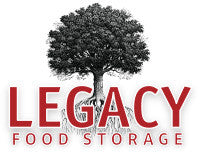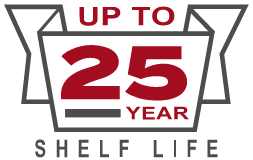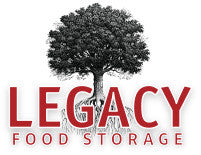
In addition to the basic necessities you have for your
survival kit, it is a good idea to consider some extras that might prove useful in a pinch. Water and food are items that come to mind immediately, but what else might you be neglecting?There are five basic areas to consider when putting together your survival kit we are going to address: Food and water, shelter and warmth, communication and navigation, hygiene and first aid, and some general tools. You should consider items that may be unique to your specific family members. Hopefully this guide will help you make sure you have a full survival kit.
Shelter and warmth - Having a safe, comfortable place to lay your head is essential. You can fit small tents into your
survival kit. There are also space blankets and heat blanket to provide you with warmth. Compact sleeping bags and pillows are also a good idea. Being able to start a fire for your meal preparation and general warmth can be accomplished with some matches or flint and steel.
Communication and navigation – You need to make sure you know where you’re going and how to get there. Having a map and compass will fulfill that requirement. It would also be nice to have a flashlight, radio and batteries. Wise
Food Insurance offers a great
solar powered flashlight. If you need to communicate or let others know your whereabouts a whistle and megaphone might be something to consider.
Hygiene and First aid - A full first aid kit in case of injuries would come in handy. It should include basic first aid including mole strips for blisters from hiking. Also consider other hygiene items such as women’s sanitation napkins, wet wipes, toothbrush, toothpaste and toilet paper. Large sanitation napkins serve a dual purpose as excellent gauze and bandage wrap for wounds.
General tools – There are many multi-purpose tools that you should consider throwing into your survival kit. A shovel can be used for digging bathroom trenches, drainage for your tent, and digging a fire pit. An axe can be used for cutting fire wood, clearing shrubbery and driving tent stakes. A knife is also a useful tool in many instances and is a great addition to any
survival gear kit. While not everyone will feel comfortable with a gun, it can be used for hunting and protection. Lastly, some good rope and wire can be used for limitless tasks that might be handy in a tight situation.We realize that there may be many items here that we have neglected. Hopefully this information will help you to start thinking about the many different types of items you should have in your
survival gear. What items do you have in your survival gear that you think others might not think about?---Curtis Familia---
 In addition to the basic necessities you have for your survival kit, it is a good idea to consider some extras that might prove useful in a pinch. Water and food are items that come to mind immediately, but what else might you be neglecting?There are five basic areas to consider when putting together your survival kit we are going to address: Food and water, shelter and warmth, communication and navigation, hygiene and first aid, and some general tools. You should consider items that may be unique to your specific family members. Hopefully this guide will help you make sure you have a full survival kit.Shelter and warmth - Having a safe, comfortable place to lay your head is essential. You can fit small tents into your survival kit. There are also space blankets and heat blanket to provide you with warmth. Compact sleeping bags and pillows are also a good idea. Being able to start a fire for your meal preparation and general warmth can be accomplished with some matches or flint and steel.Communication and navigation – You need to make sure you know where you’re going and how to get there. Having a map and compass will fulfill that requirement. It would also be nice to have a flashlight, radio and batteries. Wise Food Insurance offers a great solar powered flashlight. If you need to communicate or let others know your whereabouts a whistle and megaphone might be something to consider.Hygiene and First aid - A full first aid kit in case of injuries would come in handy. It should include basic first aid including mole strips for blisters from hiking. Also consider other hygiene items such as women’s sanitation napkins, wet wipes, toothbrush, toothpaste and toilet paper. Large sanitation napkins serve a dual purpose as excellent gauze and bandage wrap for wounds.General tools – There are many multi-purpose tools that you should consider throwing into your survival kit. A shovel can be used for digging bathroom trenches, drainage for your tent, and digging a fire pit. An axe can be used for cutting fire wood, clearing shrubbery and driving tent stakes. A knife is also a useful tool in many instances and is a great addition to any survival gear kit. While not everyone will feel comfortable with a gun, it can be used for hunting and protection. Lastly, some good rope and wire can be used for limitless tasks that might be handy in a tight situation.We realize that there may be many items here that we have neglected. Hopefully this information will help you to start thinking about the many different types of items you should have in your survival gear. What items do you have in your survival gear that you think others might not think about?---Curtis Familia---
In addition to the basic necessities you have for your survival kit, it is a good idea to consider some extras that might prove useful in a pinch. Water and food are items that come to mind immediately, but what else might you be neglecting?There are five basic areas to consider when putting together your survival kit we are going to address: Food and water, shelter and warmth, communication and navigation, hygiene and first aid, and some general tools. You should consider items that may be unique to your specific family members. Hopefully this guide will help you make sure you have a full survival kit.Shelter and warmth - Having a safe, comfortable place to lay your head is essential. You can fit small tents into your survival kit. There are also space blankets and heat blanket to provide you with warmth. Compact sleeping bags and pillows are also a good idea. Being able to start a fire for your meal preparation and general warmth can be accomplished with some matches or flint and steel.Communication and navigation – You need to make sure you know where you’re going and how to get there. Having a map and compass will fulfill that requirement. It would also be nice to have a flashlight, radio and batteries. Wise Food Insurance offers a great solar powered flashlight. If you need to communicate or let others know your whereabouts a whistle and megaphone might be something to consider.Hygiene and First aid - A full first aid kit in case of injuries would come in handy. It should include basic first aid including mole strips for blisters from hiking. Also consider other hygiene items such as women’s sanitation napkins, wet wipes, toothbrush, toothpaste and toilet paper. Large sanitation napkins serve a dual purpose as excellent gauze and bandage wrap for wounds.General tools – There are many multi-purpose tools that you should consider throwing into your survival kit. A shovel can be used for digging bathroom trenches, drainage for your tent, and digging a fire pit. An axe can be used for cutting fire wood, clearing shrubbery and driving tent stakes. A knife is also a useful tool in many instances and is a great addition to any survival gear kit. While not everyone will feel comfortable with a gun, it can be used for hunting and protection. Lastly, some good rope and wire can be used for limitless tasks that might be handy in a tight situation.We realize that there may be many items here that we have neglected. Hopefully this information will help you to start thinking about the many different types of items you should have in your survival gear. What items do you have in your survival gear that you think others might not think about?---Curtis Familia---







